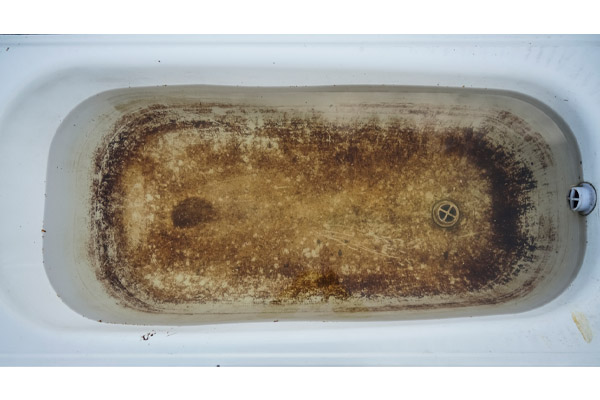Explanations for Discharge Rising Through the Bathtub
Explanations for Discharge Rising Through the Bathtub
Blog Article
This article in the next paragraphs pertaining to Why sewage is coming up through your bathtub is quite entertaining. Give it a try and make your own results.

Sewage back-up in the bath tub can be an upsetting and unhygienic trouble for any home owner. Not only is it inconvenient, however it likewise presents significant health and wellness dangers and suggests underlying problems with the plumbing system. Recognizing why sewage is coming up via the tub is crucial for taking ideal action to address the issue efficiently.
Intro to the Concern
Common Reasons for Sewer Back-up
Clogs in the Drain Line
Among the most typical root causes of sewage backup is a clog in the drain line. This can happen because of the build-up of debris, grease, or international items in the pipelines, protecting against correct circulation and creating sewage to back up into your bathtub.
Tree Origin Intrusion
Tree origins seeking moisture and nutrients can infiltrate drain lines through small splits or joints. Over time, these roots can expand and broaden, triggering substantial damages to the pipes and bring about sewage backup concerns.
Comprehending the Trouble
When sewage draws back up into the tub, it's a clear sign of a problem with the water drainage system. The wastewater that should be streaming away from your home is rather discovering its back into your space, which can cause considerable damage and carcinogen.
Prospective Reasons
Several factors can add to sewage backup in the tub. From obstructions in the sewage system line to issues with the plumbing framework, identifying the root cause is necessary for locating an option.
Aging Infrastructure
Older homes might have obsoleted plumbing systems that are extra vulnerable to rust, fractures, and degeneration. As pipelines age, they come to be more vulnerable to leaks and blockages, increasing the possibility of sewage back-up cases.
Heavy Rainfall or Flooding
During periods of heavy rainfall or flooding, the drain system may become overloaded with excess water, triggering back-ups and overflows. This can result in sewage backing up right into bathtubs and other components inside the home.
Indicators of Sewer Back-up
Foul Odors
Unpleasant smells emanating from drains pipes or components, specifically in the washroom, might indicate sewer backup problems. These odors are often strong and persistent, signifying an issue that calls for immediate attention.
Slow Draining Fixtures
Bath tubs, sinks, and bathrooms that drain slowly or otherwise in any way could be experiencing sewer back-up. If numerous components are affected at the same time, it's most likely that the concern stems from an usual factor, such as the main sewage system line.
Gurgling Sounds
Strange gurgling or gurgling noises coming from drains pipes when water is running in other places in your house are a sign of air trapped in the plumbing system. This air buildup can result from sewer backup and ought to be investigated promptly.
Health Dangers Associated with Sewer Backup
Contamination of Water Supply
Sewer backup can pollute the water system in your house, posing a serious wellness threat to you and your family. Exposure to infected water can cause intestinal problems, skin infections, and various other ailments.
Mold Growth
Moisture from sewer back-up can produce optimal problems for mold and mildew development in your home. Mold and mildew spores can exacerbate breathing issues and cause allergic reactions in sensitive individuals, making prompt cleanup essential.
Spread of Condition
Sewer has dangerous bacteria, viruses, and parasites that can create a variety of diseases, including hepatitis, cholera, and gastroenteritis. Coming into contact with sewage or contaminated surfaces puts you at risk of infection.
Tidying up After Sewage Backup
Disinfection Procedures
Extensively disinfect and sterilize impacted locations after sewer back-up to remove hazardous germs and stop mold and mildew growth. Use proper cleaning products and protective gear to ensure safe and efficient clean-up.
Reconstruction of Impacted Locations
Fix any kind of damages to floor covering, walls, or components caused by sewer backup. Relying on the extent of the damage, you may need to change carpets, drywall, or other products to recover your home to its pre-loss condition.
Immediate Actions to Take
Turning Off Water System
In case of sewer back-up, it's essential to turn off the water to stop additional contamination and damage. Situate the primary water shutoff valve in your home and closed it off till the concern can be resolved.
Contacting a Professional Plumber
Managing sewer back-up is not a do it yourself job. Get in touch with a licensed plumber with experience in dealing with sewage-related issues to assess the scenario and execute essential repair services or clean-ups.
Avoiding Contact with Infected Water
Until the sewage backup is fixed, prevent contact with contaminated water to avoid the spread of microorganisms and microorganisms. Put on protective gear if you need to be in the damaged location and clean your hands thoroughly afterward.
Preventive Measures
Normal Upkeep of Sewage System Lines
Set up regular evaluations and maintenance of your drain lines to identify and deal with possible concerns prior to they rise into major problems. This can consist of clearing out particles, evaluating for tree root invasion, and fixing any broken pipes.
Setting Up Backwater Valves
Think about mounting bayou valves in your plumbing system to avoid sewage from flowing back right into your home throughout periods of heavy rainfall or flooding. These shutoffs instantly close when water draws back up, securing your residential or commercial property from contamination.
Correct Disposal of House Waste
Prevent purging anything aside from toilet paper and human waste down the commode to stop blockages and blockages in the drain line. Dispose of oil, oil, and various other household chemicals appropriately to lessen the threat of plumbing troubles.
Why Is Water Backing Up in My Bathtub When I Flush My Toilet?
What to do about a sewer line clog
First, don’t bother with plunging. No amount of plunging will dislodge the clog in a sewer line. The clog is too far away. Plungers are for clogs in the toilet itself, not the sewer line. Plus, the most likely causes of a sewer clog are:
Tree roots Flushed toys or feminine products Grease buildup Those items don’t move easily. And in the case of tree roots, the roots need to be cut out of the pipe and the pipe will need to be repaired.
You’ll need a closet auger. A closet auger is a type of plumber’s snake with a protective cover to keep from scratching the delicate porcelain toilet. If the clog is further down, you may need to remove the toilet or use one of your cleanouts to get to the clog.
We also recommend doing a video inspection of the drain to ensure that the cause of the clog has been completely removed. Otherwise, you could have the same problem again in a few days or weeks.
https://mspplumbingheatingair.com/blog/why-is-water-backing-up-in-my-bathtub-when-i-flush-my-toilet

I discovered that piece on Why is There Sewage Coming Up Through the Bathtub when doing a lookup on the internet. For those who enjoyed reading our blog posting plz don't forget to share it. Thanks a lot for your time. Return soon.
Details
Report this page